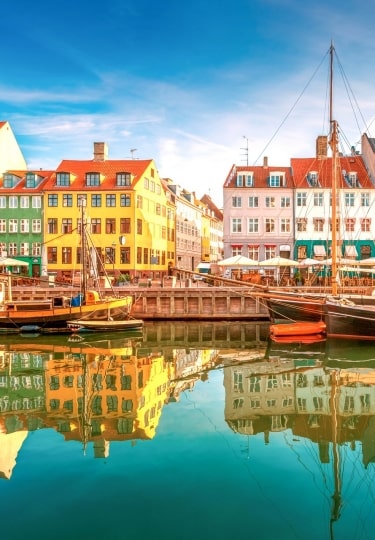The Danish capital of Copenhagen is often lauded as the exemplar of what a small city should be, and there’s so much to explore in this canal-riven gem.
It’s a city of minimalist design, cyclists, and an easy relationship with its visible past and present. The creative energy can be felt (and seen) in the streets, but it’s also laid back, with the central Tivoli Gardens testimony to Copenhagen’s playful side.
Beyond the heritage, expect “hygge” (or cozy) café culture, hipster bars, unexpected green spaces, and the kind of sustainable mindset that sees an artificial ski run make use of the top of a waste-burning power plant.
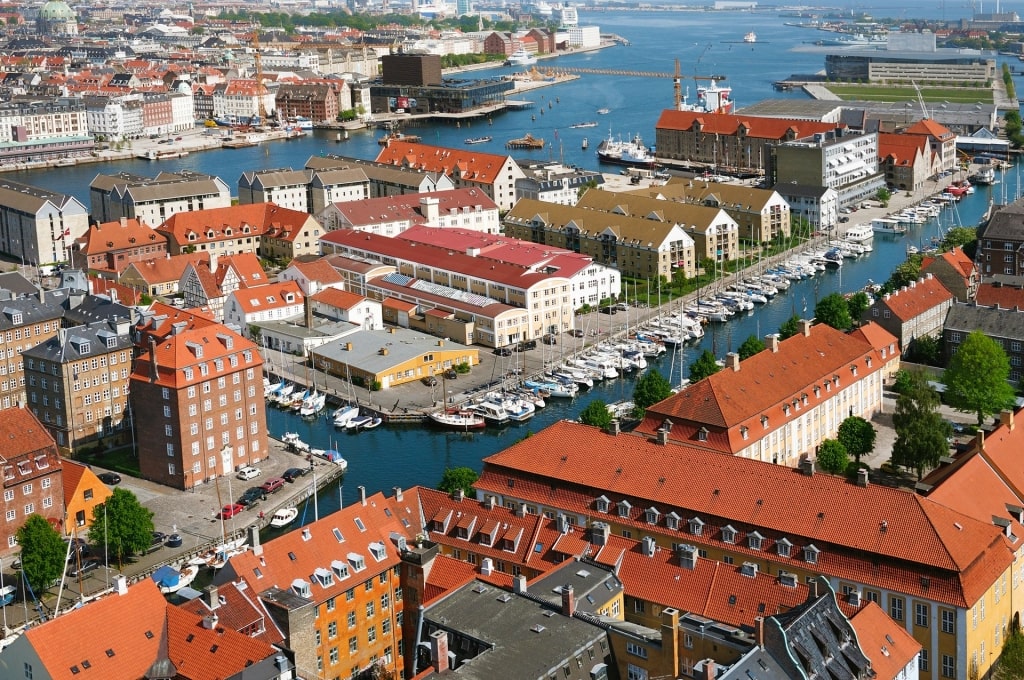
Copenhagen
Read on to learn what to see with 24 hours in Copenhagen.
8 a.m.: Explore historic Slotsholmen
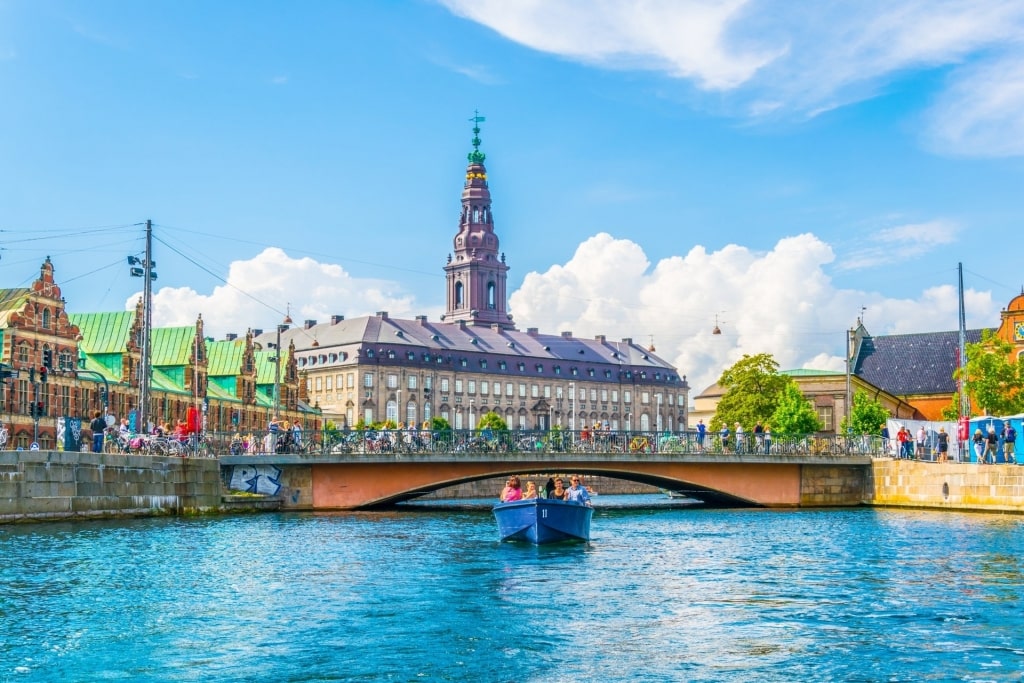
Slotsholmen
Pick up a Danish pastry and Norwegian bean cappuccino at CUB Coffee on Boldhusgade. Fueled up, head for the nearest bridge to Slotsholmen (Castle Island). Copenhagen’s cultural district and the seat of the Danish government. As you cross over the canal-moat that surrounds it, swans will coast by below while besuited civil servants cruise past above.
Ahead you’ll see the austere facade of Christiansborg Palace—the seat of power in Denmark since the 12th century (known as “Borgen” for short). It’s architecturally (and politically) Neapolitan ice cream, incorporating neo-baroque, baroque, and neoclassical flavors as well as the Supreme Court, Prime Minister’s Office, and parliament.
While Borgen is a political and judiciary hive today, the Danish Royal Family does retain access to the stables and several of the grand spaces within. Some of those are available for you to visit including the castle’s tower, the highest in the city
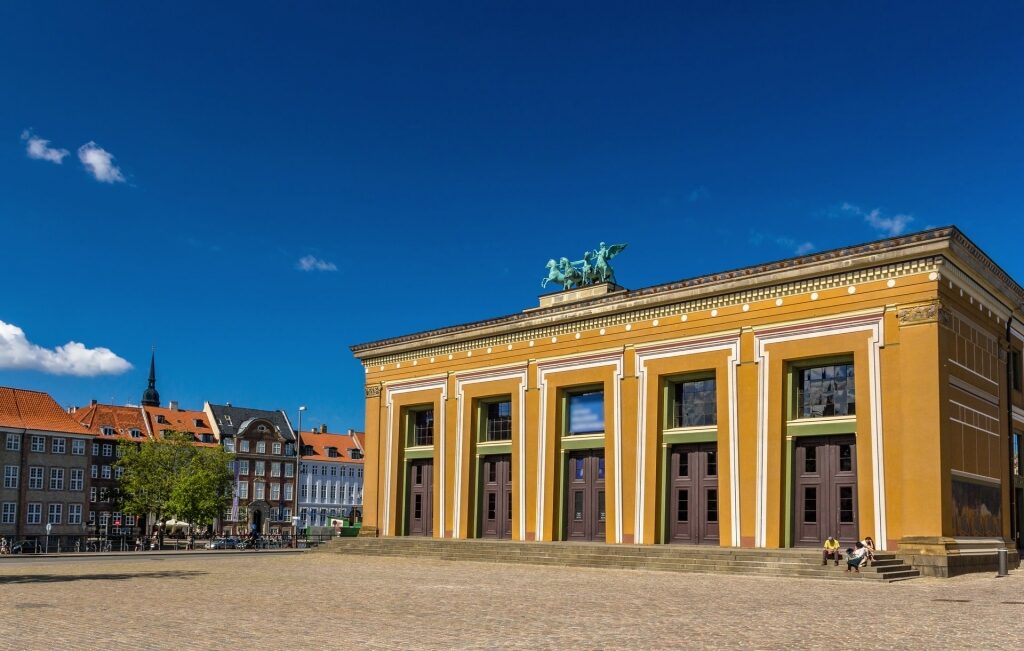
Thorvaldsens Museum
Also somehow wedged on to this tiny island is the outstanding Danish War Museum; Thorvaldsens Museum (dedicated to sculptor Bertel Thorvaldsen); as well as the dazzling “Black Diamond” by the cobblestoned canalside walk. The latter, the modern glass extension of the Royal Danish Library, is considered one of the city’s architectural highlights.
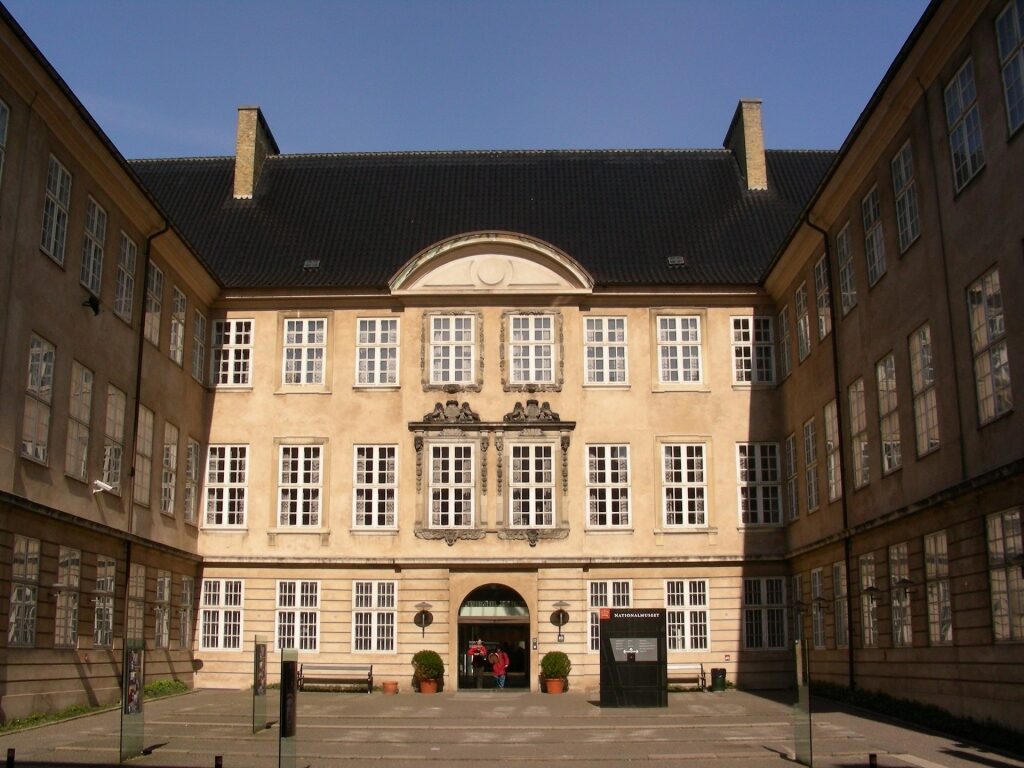
National Museum of Denmark
If you think you can squeeze it into your one day in Copenhagen, you should also consider a dash around the National Museum of Denmark. Over the Storm Bridge and housed in the Prince’s Palace, its impressive collection will orient you from how Stone Age Danes went from caves and clubs to wine caves and nightclubs.
Read: Best Museums in Copenhagen
10 a.m.: Tivoli Gardens
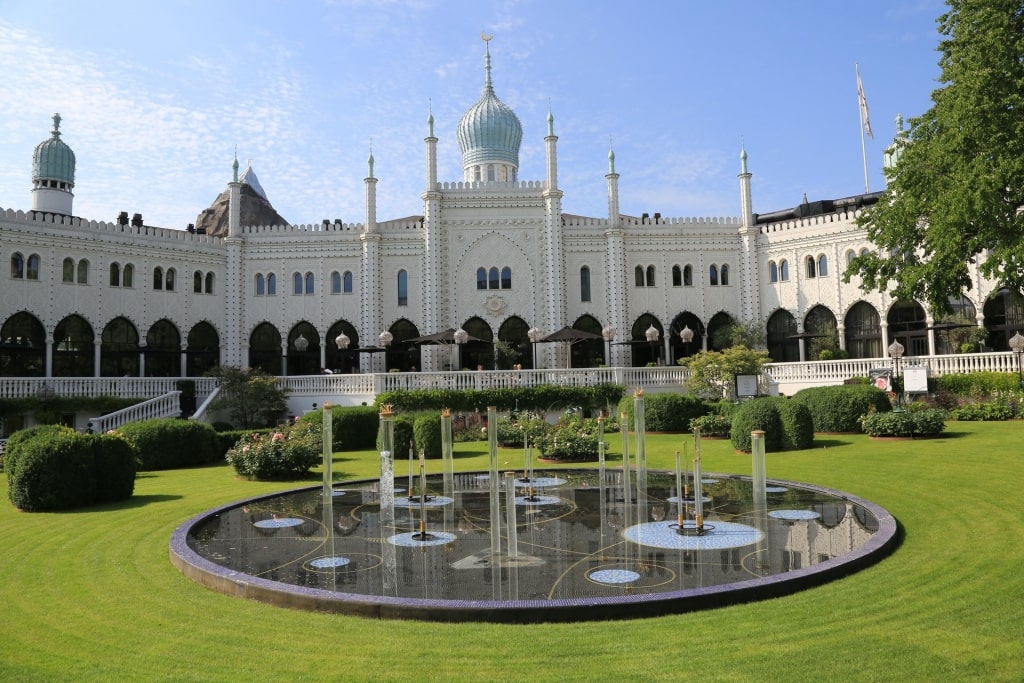
Tivoli Gardens
Cross over H. C. Andersens Boulevard just a few minutes west of Slotsholmen and you’ll find the iconic Tivoli Gardens.
Beloved by the city, this 19th-century amusement park incorporates a concert hall, numerous pavilions, and live stage shows that offer a year-long schedule of events for the lucky Copenhageners.

Tivoli Gardens
This fantastical park, roughly half the size of Slotsholmen, also includes a lake with a pirate ship that moonlights as a burger joint, a 100-year-old rollercoaster, and tulip displays in the spring. So fantastic are the gardens that the city’s favorite son, “Little Mermaid” author Hans Christian Andersen, used to sit on a bench to seek inspiration here.
While it may be difficult to schedule with only one day in Copenhagen, Tivoli Gardens after dark is when the spirit of H. C. Andersen’s fantastic tales truly settles upon the city. The entire site becomes a confection of colored bulbs, warmly glowing lanterns, and sparkling fairy lights. On Saturday evenings the gardens also host a regular fireworks display.
Read: Europe With Kids: 9 Family-Friendly Places to Go
11 a.m.: Besiege Denmark’s castles
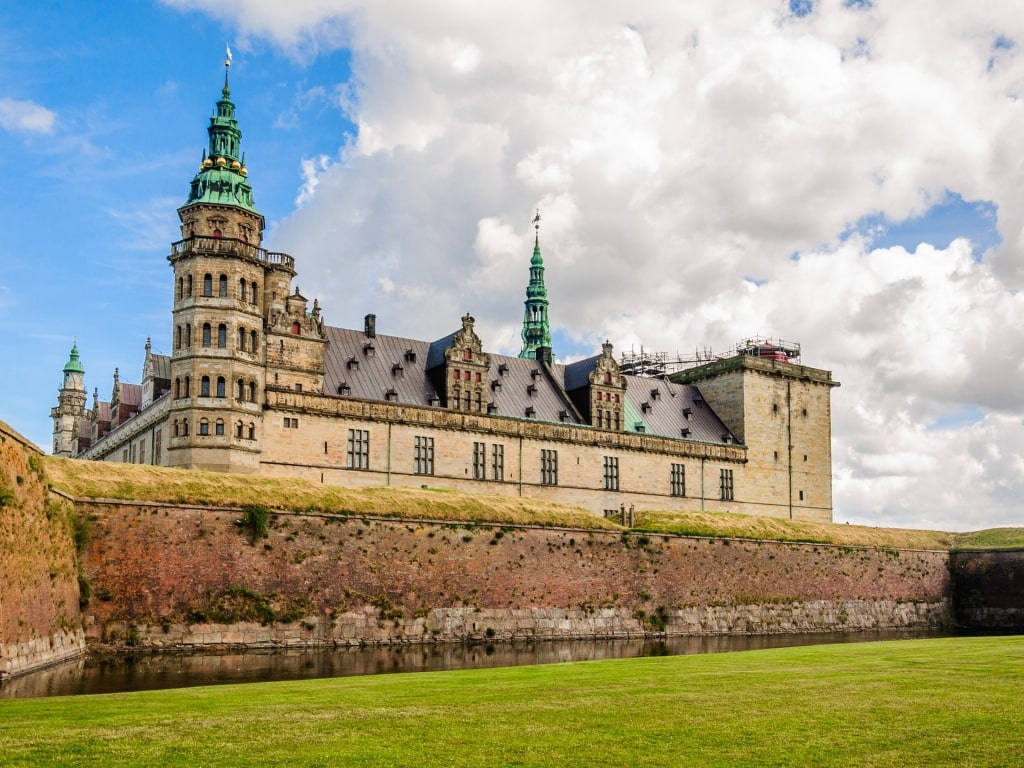
Kronborg Castle
For a relatively small country, Denmark is great value for admirers of medieval fortifications and tapestry-hung grand halls.
To the north of Copenhagen you’ll find the epic Kronborg Castle, made famous by Shakespeare as Hamlet’s haunted home. There’s also lakeside Fredensborg Palace that acts as a holiday home for the Danish royals. More accessible is Frederiksborg Castle, a renaissance pile that doubles as the Museum of Natural History.
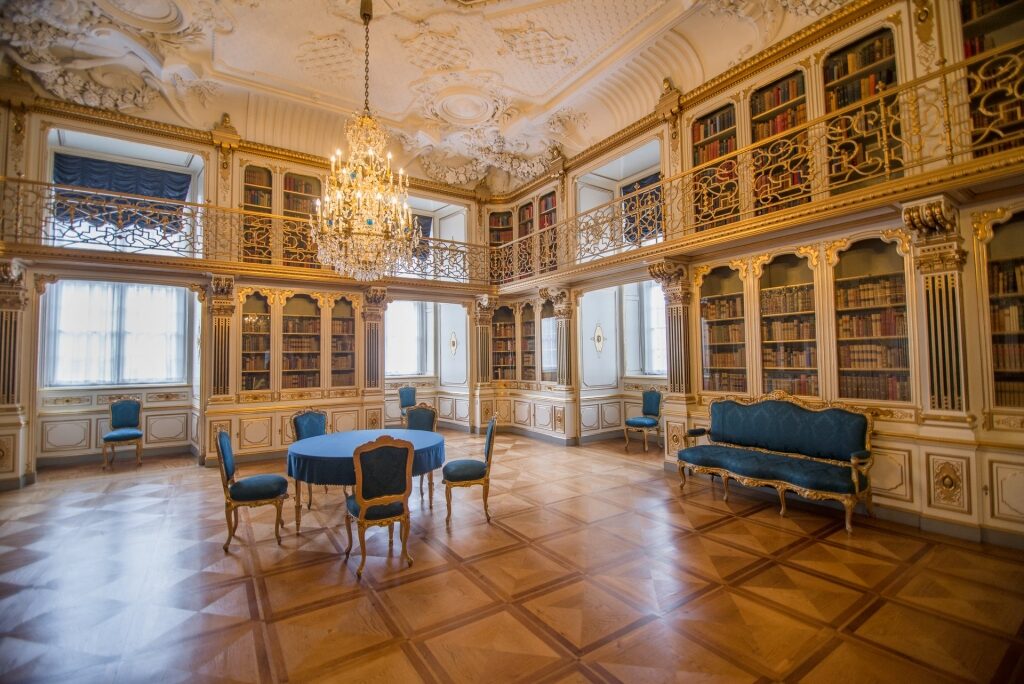
Rosenborg Castle
But with only one day in Copenhagen, you need to keep it local. Fortunately, there are several incredible royal homes to explore in the city center. You’ve already ticked off Borgen, so it’s on to renaissance Rosenborg Castle, found north of Slotsholmen (but still in Copenhagen K).
Home to Denmark’s crown jewels, this verdigris-roofed, brown stone edifice was built by Christian IV. Its upper rooms offer a chronological tour through royal history, while in the (more secure) basement twinkle the family’s jewels.
The castle’s King’s Garden is a neat expanse of rose gardens and herbaceous borders over which to sigh. In fact, the palace is surrounded by green spaces; just across Oster Volgade, you’ll find the city’s botanical gardens.
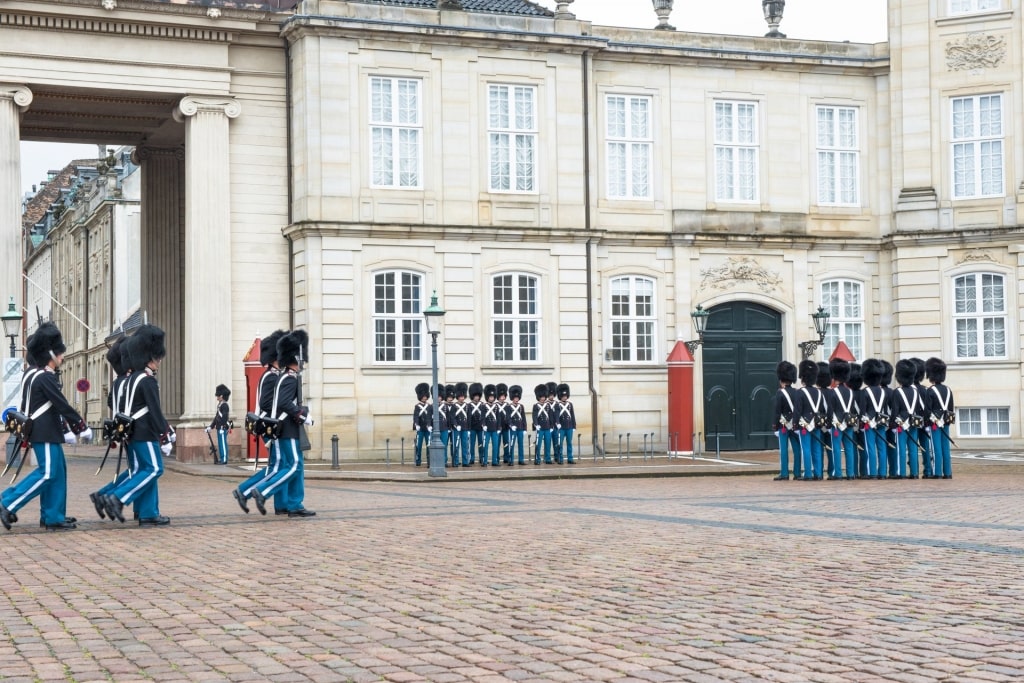
Amalienborg Palace
At 11:30am daily, the Royal Guard marches from Rosenborg Castle to your next stop, Amalienborg Palace. Why not be at Amalienborg to see these blue-trousered regiments gather in the circular plaza like a martial cuckoo clock? If there’s a band marching as well, then you’ll also know that Queen Margrethe II is in residence at the palace.
Only two of the identical stately homes that comprise Amalienborg are open to the public: the Christian VII and Christian VIII palaces. The latter also doubles as a museum covering 150 years of royalty. Peering at Amalienborg across the waterfront is the Opera House and you’ll notice a rather handy quay built for easy access from the palace to the best seats in the house.
1 p.m.: Dine Danish
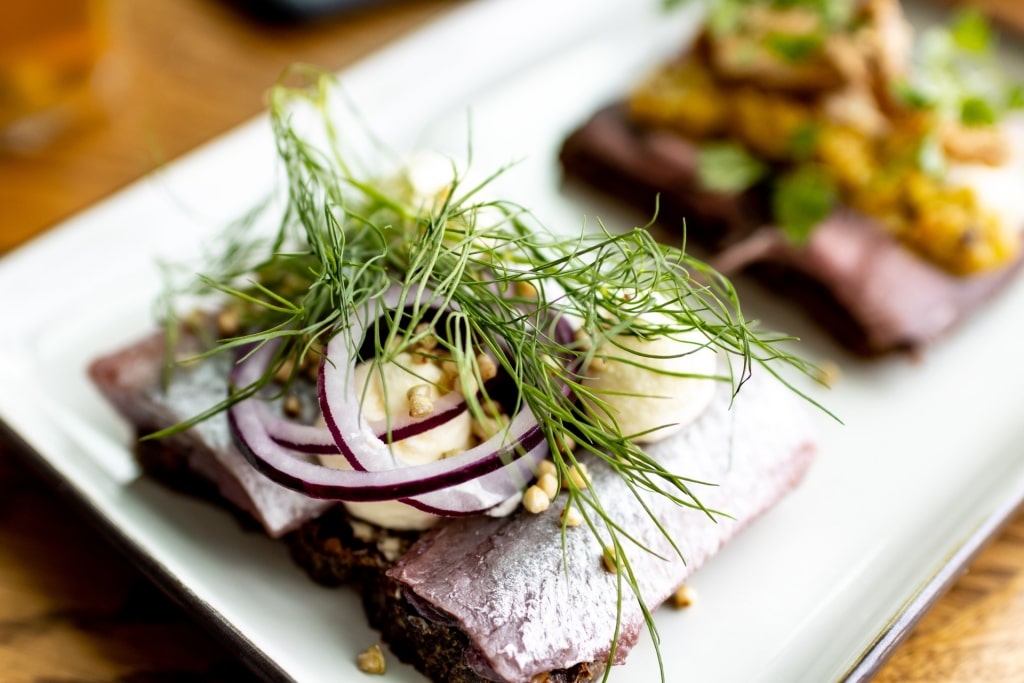
Pickled herring
Copenhagen may be renowned for inventive reductions and theatrical haute Scandinavian cuisine but more traditional fare remains the Copenhagener’s rugbrød and butter.
The Danes’ close relationship with the sea means that fish is ever popular and arrives on the plate in myriad forms. During your one day in Copenhagen, pickled herrings will never be far away. Potatoes are also a staple, as is pork, often delivered with a side of sharp and sweet pickled beets, creamed kale, or a heap of cornichons.
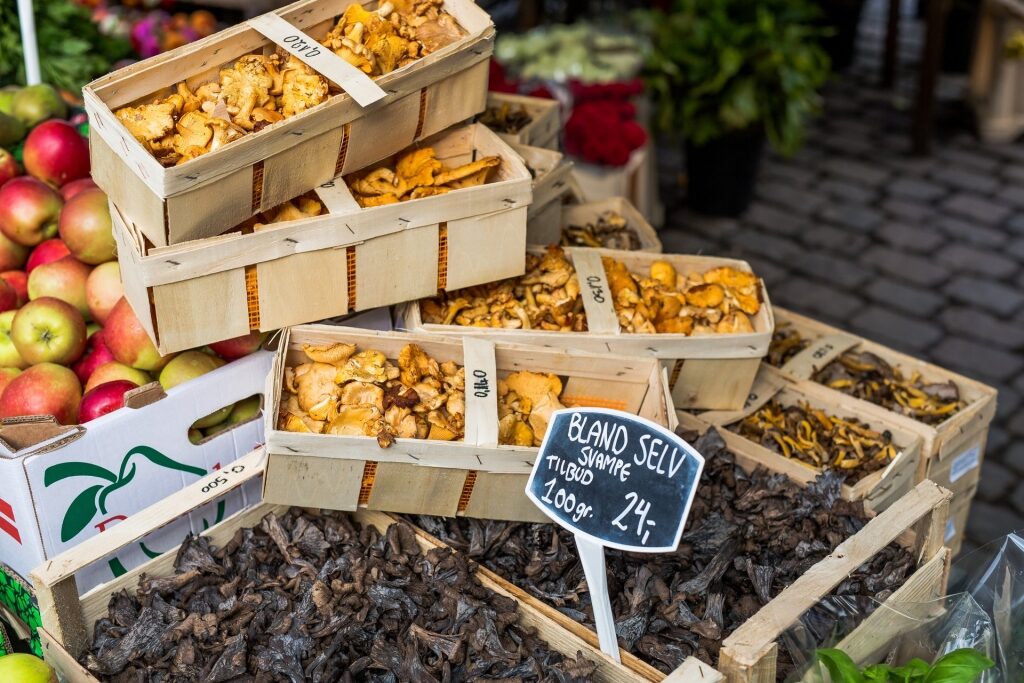
Torvehallerne
With only one day in Copenhagen, a food tour is a must to tap into true Danish flavors. You’ll start your tour at Copenhagen’s hall of plenty, the Torvehallerne.
In this bustling marketplace, you’ll be introduced to the country’s seasonal larder, meet local vendors, and sample some fresh ingredients and traditional favorites. Expect Danish fish cakes (fiskefrikadeller), the iconic open-faced sandwich (smørrebrød), and a small glass of Danish bitter or liqueur to help keep you refreshed.
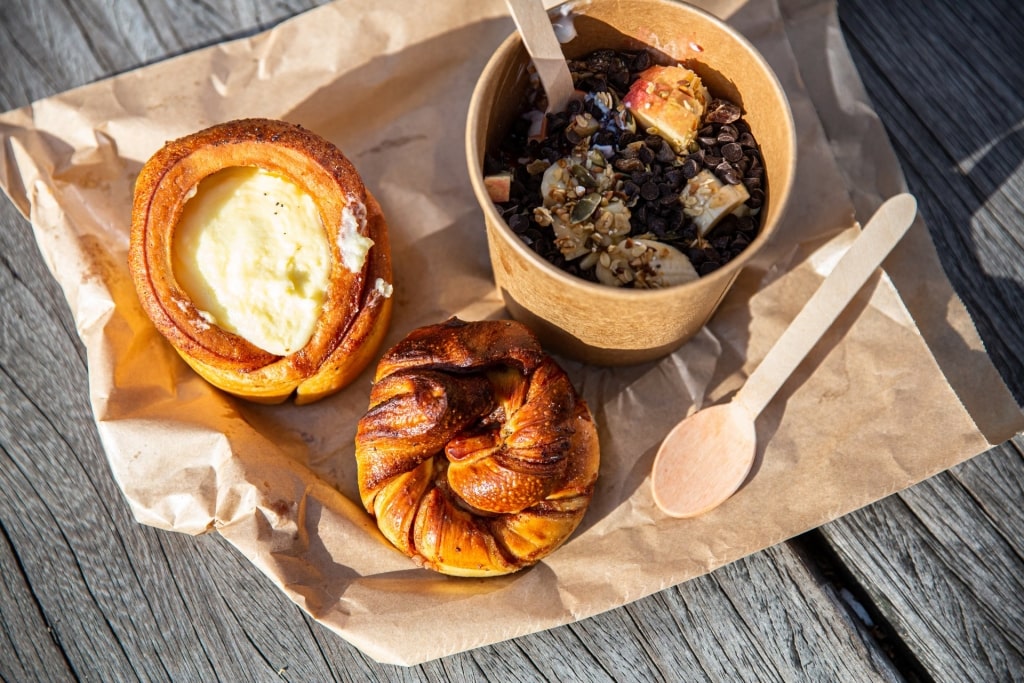
Old town
Afterward, head into Copenhagen’s old town where you’ll be guided to a local bakery to sample the Danes’ sweet side. And, while few will feel they need an introduction to Danish beer, having probably supped a Carlsberg or Tuborg at some point in their lives, Danish beer is actually about a lot more than just clean, sunshine-yellow lagers.
For an illustration, you’ll stop into BrewPub, the only brewery located within the old ramparts. A tour of this microbrewery will conclude with a tasting of four different beers—think chocolate stouts and weiss beer—that’ll bring you up to speed with modern Danish beer trends.
Read: The Ultimate Copenhagen Food Guide
2 p.m.: Take a harbor cruise
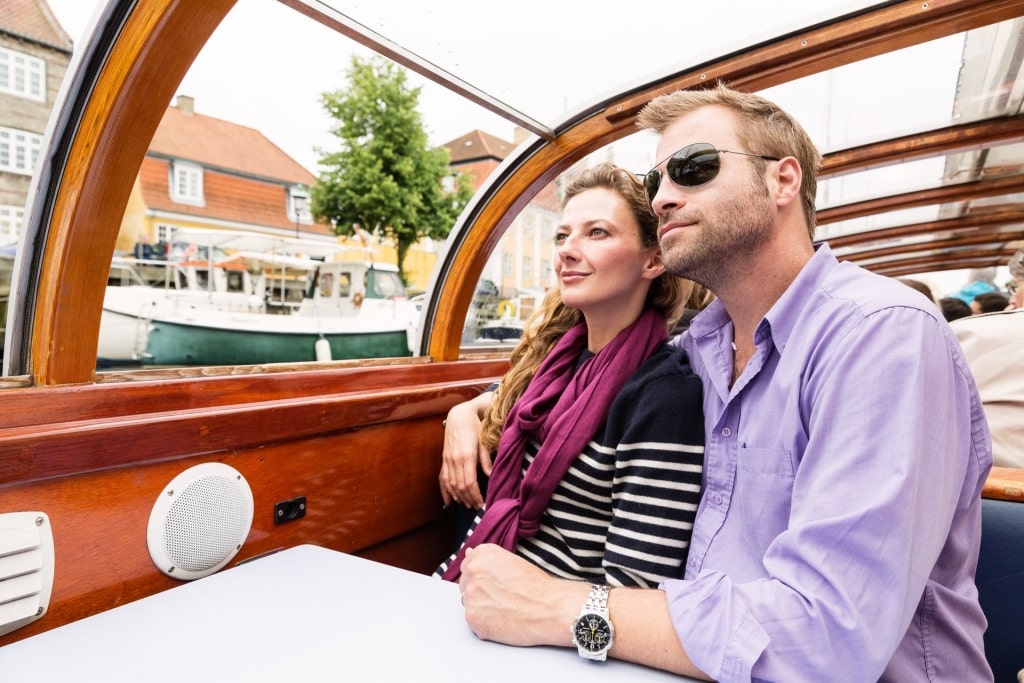
Harbor cruise
Time to digest. One of the best things to do in Copenhagen is to find your way to Gammel Strand (formerly the Old Fish Market) where a boat awaits to take you on an immersive cruise along the city’s waterways.
You’ll see the Slotsholmen sights from a new perspective while you discover the city’s maritime side. The harbor is in fact three harbors, North, South, and Inner. You’ll putter past transformative waterside development projects, get a closer look at the Royal Opera House, and, depending on the time of year, spot swimmers diving into the clean waters.
3:30 p.m.: Walk the waterfront
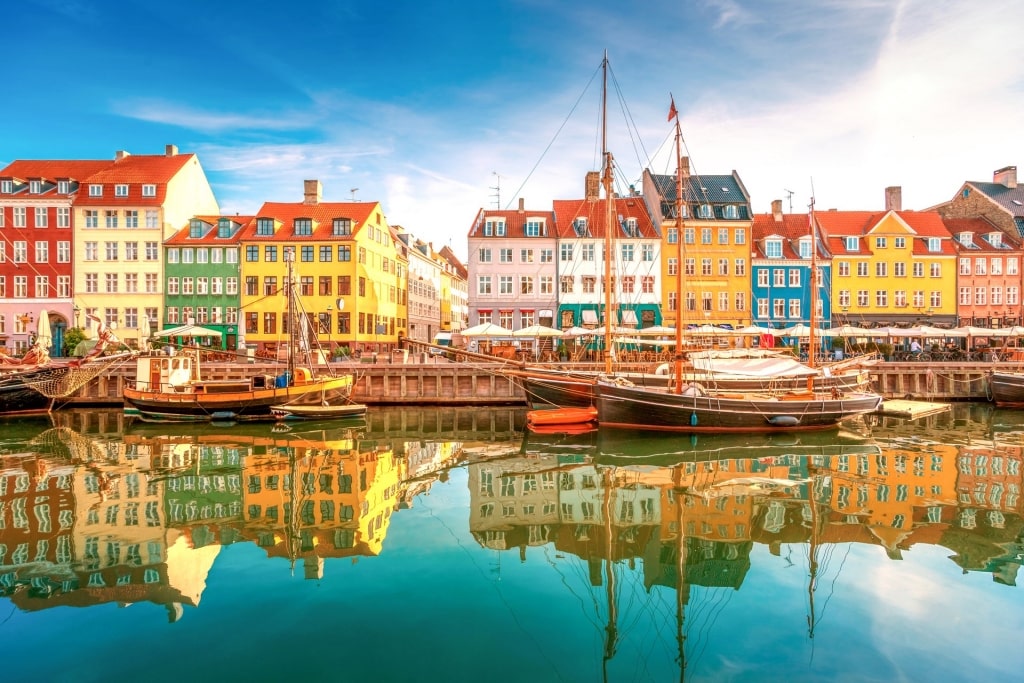
Nyhavn
Having sailed around the historic harbor and skirted the waterfront while visiting Slotsholmen and Amalienborg Palace, it’s time to discover Copenhagen’s best side.
Photogenic Nyhavn, found between Slotsholmen and the palace, used to be a thriving 17th-century commercial port, full of carousing sailors. It’s mellowed a lot since then, not that H. C. Andersen minded; he lived there for 20 years.
Today, its gabled merchants’ houses gaze tolerantly across the central canal while the quaysides fill with drinkers, diners, and jazz riffs. It may have gentrified, but, as you can see from its bright buildings and almost universal popularity, it’s lost none of its literal or metaphorical color.
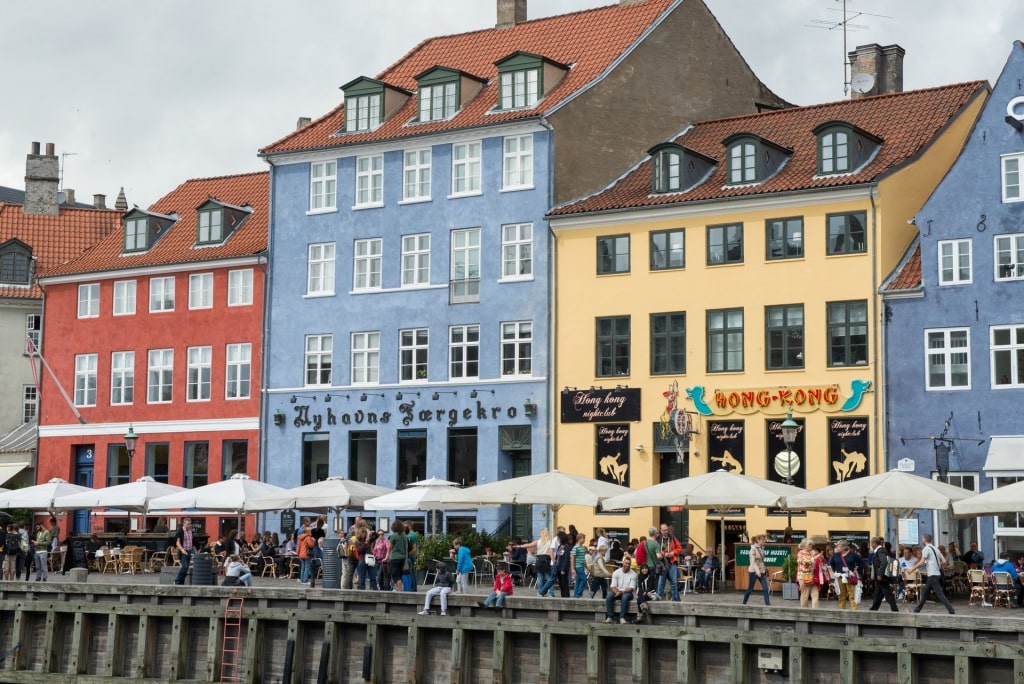
Faergekro
A good place for an afternoon Copenhagen Cocktail paired with a top-notch herring buffet is Nyhavns Faergekro’s sun-splashed patio. If the weather’s decidedly Scandinavian, head upstairs to the “hygge” tables inside to dine amid the model ships of this former medieval shipping company.
North of Nyhavn, you’ll reach the Langelinie Marina. Follow the promenade to that symbol that Copenhagen is known for, the bronze of The Little Mermaid.
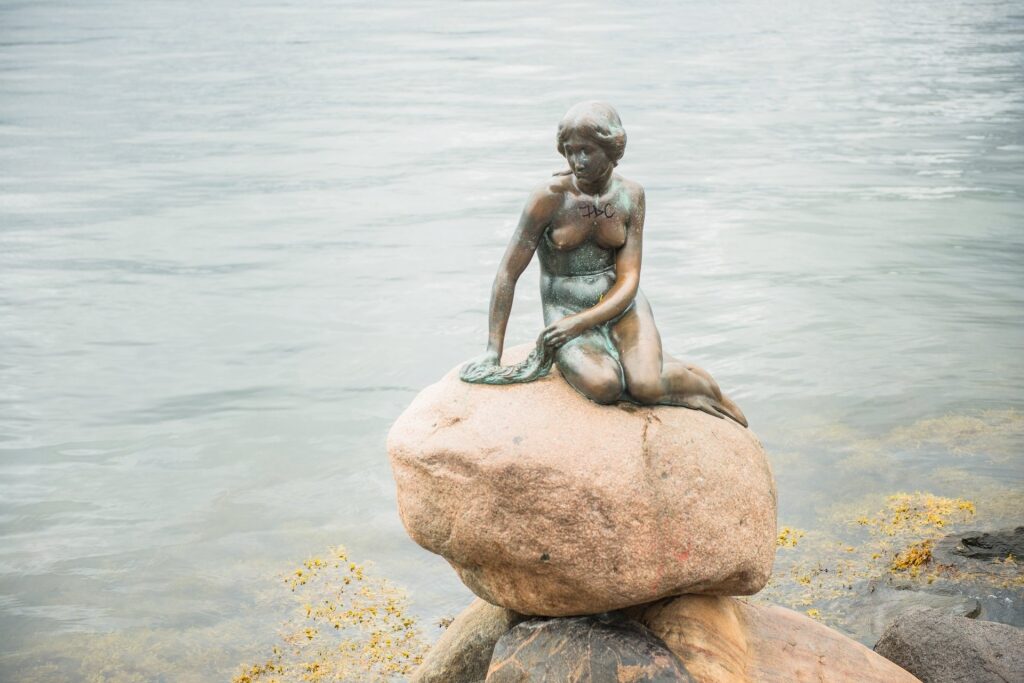
The Little Mermaid
The wistful statue was commissioned by a brewer who was moved to action following a particularly affecting performance of the H. C. Andersen classic story. Whether it moves you to the same degree is another question, but as the city’s most famous statue, you have to see it with only 24 hours in Copenhagen.
If you prefer a martial monument, take a stroll through the grounds of the “Kastellet” star fortress nearby.
Read: 9 Fascinating Cities in Scandinavia to Explore
4:30 p.m.: Canal tour of Christianshavn
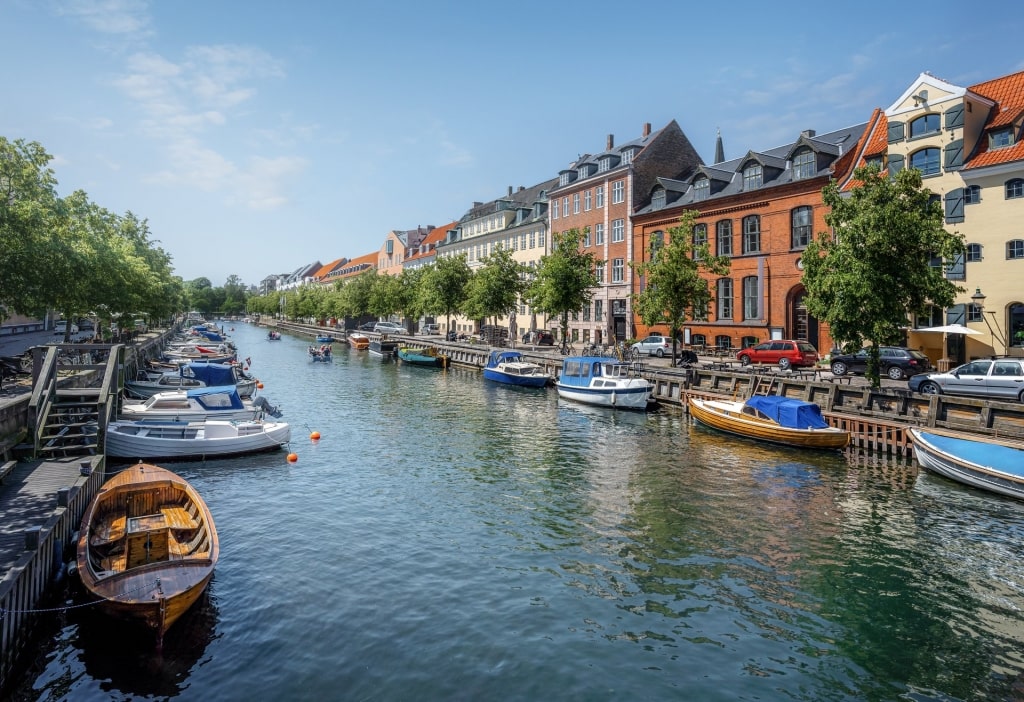
Christianshavn
Christanshavn, an orderly archipelago of three islands (known as the Holmen), is a neighborhood with a decidedly nautical vibe; somewhere that feels like a part of Copenhagen and a place apart.
The name translates as “King Christian’s Harbour”. The area was developed into an extension of the city’s fortifications about midway through King Christian IV’s long and steady reign. Broad-chested buildings in bright primary colors shine in the sun while, in the canals below, rowing sculls scythe through the navy-blue waters.
In the summer, the quayside is darkened by the sun umbrellas of bars and restaurants. Drinkers gather on the canal’s edge dangling their legs over the water. Look up at them from a boat tour, drifting gently along for 50 minutes through this gorgeous slice of Copenhagen.
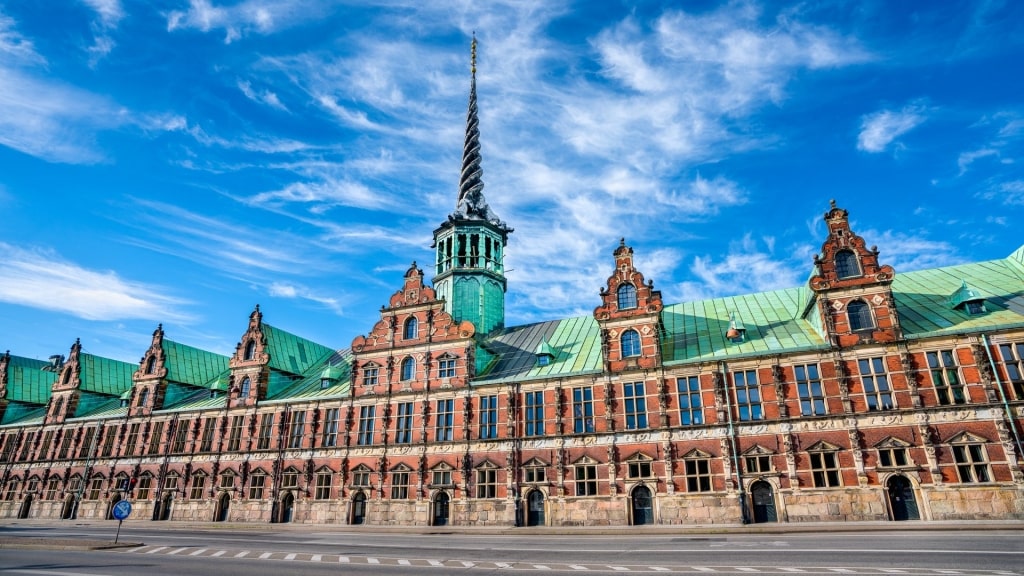
Old Stock Exchange
Spot landmarks like the ancient Old Stock Exchange with its dragon spire, the pastel-colored row houses, and street art of hippy paradise, Christiana.
You’ll also see the Church of our Saviour, its twisted spire a kind of architectural Caprice wafer. There are 400 steps to the top and its glorious views but, having absorbed the easygoing Copenhagener vibe, maybe you’ll just stick to picture-perfect canals.
Read: What Is Denmark Known For?
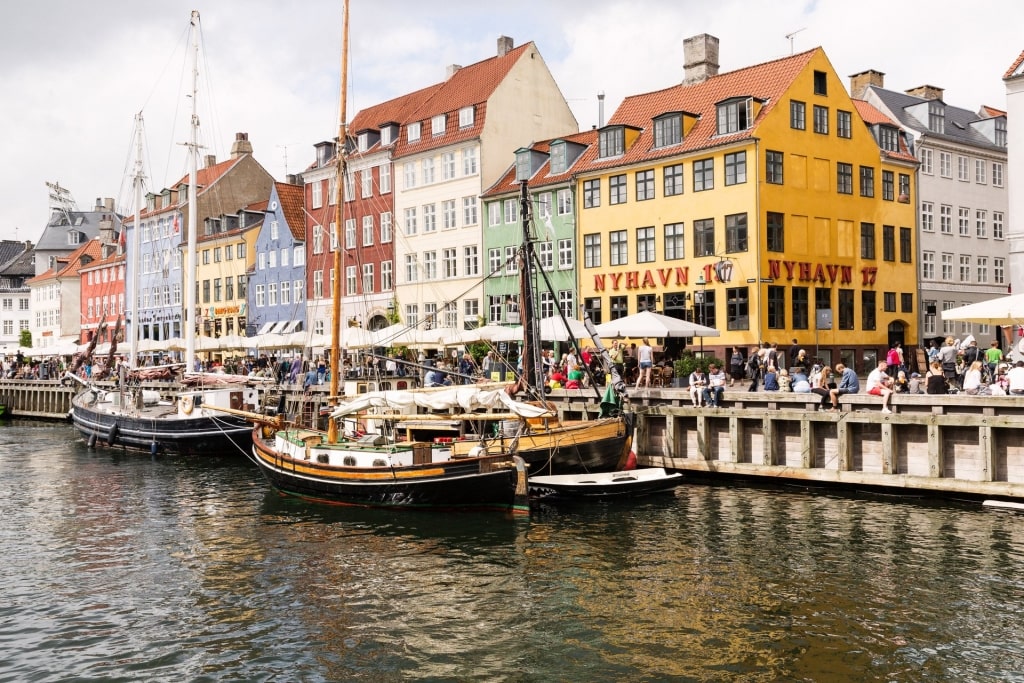
Nyhavn
Experience one day in Copenhagen on a cruise to delightful Denmark. The Danish capital’s world-beating cuisine, fascinating history, and engaging urban spaces make for an unforgettable city break.
Browse our cruises to Copenhagen to book an incredible vacation to Scandinavia.
